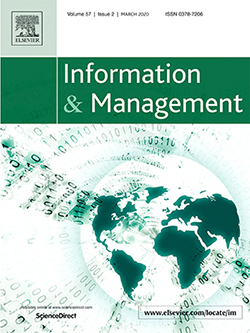본문
A chronological review of empirical research on personal information privacy concerns

By Prof. Haejung Yun (yunhj@ewha.ac.kr)
Department of International Office Administration
Prof. Haejung Yun’s recent publication, “A chronological review of empirical research on personal information privacy concerns” in Information & Management, is a systematic literature review study to examine chronical changes of research contexts and constructs on personal information privacy concerns.
As concerns about personal information privacy (PIP) continue to grow, an increasing number of studies have empirically investigated the phenomenon. However, researchers are not well informed about the shift of PIP research trends over time. In particular, there is a lack of understanding of what constructs have been studied in what contexts. As a result, researchers may design their study without sufficient guidance. This problem can lead to unproductive efforts in advancing PIP research. Therefore, it is important and timely to review prior PIP research to enhance our understanding of how it has evolved.
We are particularly interested in understanding the chronological changes of contexts and research constructs studied. We use a chronological stage model of PIP research we develop, a set of contextual variables identified from prior literature, and the four-party PIP model suggested by Conger et al. (2013) as theoretical foundations to conduct a chronological literature review of empirical PIP concern studies. More specifically, we analyze contexts in terms of i) what types of individuals are concerned about ii) what types of personal information being collected by or shared with iii) what types of organizations in iv) what types of technology or service contexts. In addition, we analyze PIP related constructs including antecedents and outcomes of PIP concerns.
We find that, over the last two decades, the quantity of PIP research has drastically increased, that the variety of contexts and research constructs being studied has increased substantially, and that many constructs have been studied only once while only a few have been repeatedly studied. We also find that the focus of PIP research has shifted from general/unspecified contexts to specific ones. We also propose a fifth party as an emergent player in the ecosystem of personal information privacy and call for future research that investigates it. This study has several theoretical contributions to the literature of PIP research as follows:
First, using the proposed stage model of chronological progress of PIP and Conger et al.(2013)’s four-party PIP model, it is a first attempt to conduct a chronological review of the empirical research investigating PIP concerns and relevant constructs in various contexts for the last two decades. Since information privacy is dynamic and context-sensitive in nature, this study takes a theoretically meaningful step to understand the chronological development and evolution of contexts and constructs of PIP research.
Second, as discussed, this study identifies the gaps in current PIP concern studies. One important gap is the lack of empirical research on third and fourth parties. Because of emerging technologies and complex interactions among different parties in rapidly evolving digital ecosystems, individuals are increasingly concerned about unauthorized uses of personally identifiable information (PII) by third and fourth parties. Therefore, future research needs to focus more on understanding this understudied area and addressing how and why individuals’ privacy concerns differ towards the second, third, and fourth parties.
Third, the trends of increased automation of data collection and the popularity of emerging technologies such as wearables, AI, drone, connected car, and IoT usher us in a new wave of PIP concern incursions and invasive marketing. Now, we are witnessing a rise of unknown and hidden parties that legally or illegally collect personal information without consent from a variety of online and offline sources for their business opportunities. There is a need to extend the four-party PIP model to reflect current phenomena of emerging technologies.
Last but not least, we call for a quantitative meta-analysis of the empirical findings of the key theoretical relationships between PIP concerns and other related constructs. Recognizing the lack of cumulative knowledge on PIP concerns, a few studies have attempted to integrate and synthesize the empirical findings on the relationships between PIP concerns and related constructs (Li, 2011; Smith et al., 2011). While they provide valuable insights and develop integrative research models, they mainly rely on qualitative analysis methods. As a result, one important gap is that we have little knowledge about how empirical findings of PIP concern research add up statistically. We believe that, as the number of empirical studies on PIP concern continues to increase, it is timely to respond to this call and conduct a meta-analysis to find out what cumulative effects are statistically significant and what are still inconclusive.

* References
Conger, S., Pratt, J.H. and Loch, K.D. (2013) Personal information privacy and emerging technologies. Information Systems Journal 23(5), 401-417.
Li, Y. (2011) Empirical studies on online information privacy concerns: Literature review and an integrative framework. Communications of the Association for Information Systems 28(1), 453-496.
Smith, H. J., Dinev, T. and Xu, H. (2011) Information privacy research: An interdisciplinary review. MIS Quarterly 35(4), 989-1016.
